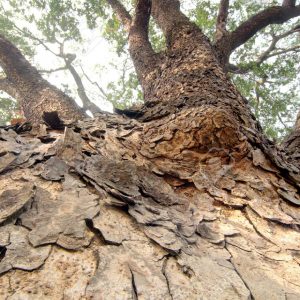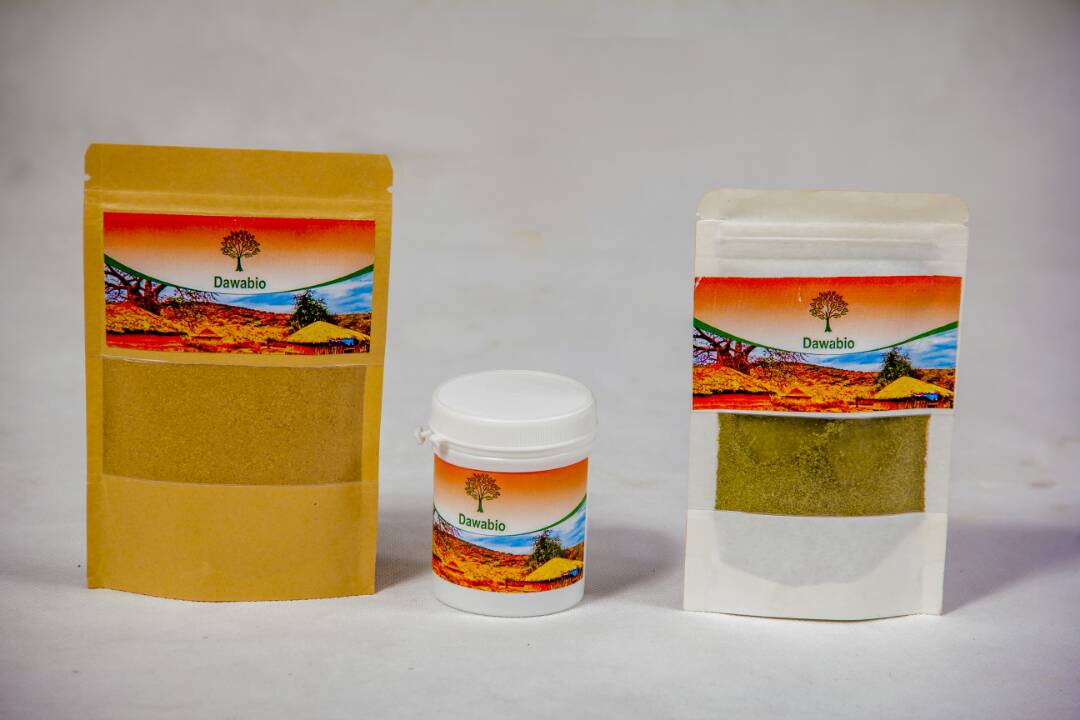- Home
- Blog
Blog
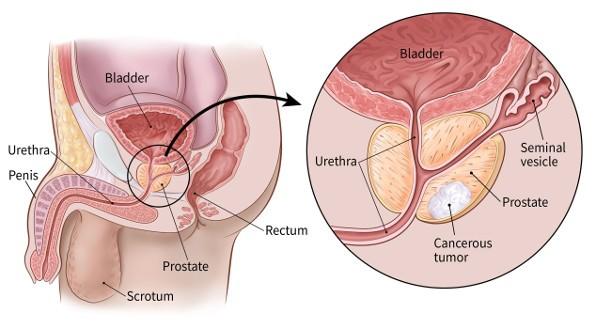
PROSTATE CANCER AND IMPOTENCE: Natural Treatment
On 26/12/2019
Prostate Cancer and Impotence: Natural Treatment
Prostate cancer is the most common cancer, both in men and in the general population.
The prostate is a gland in the male reproductive system that plays a hormonal role and in the production of sperm. The appearance of cancer prostate is the transformation of prostate cells. Initially healthy, they multiply in an anarchic manner until they form a malignant tumor. In 95% of cases, cancers are in the histologic form of adenocarcinoma which develops from the cells making up the lining tissue of the prostate. If cancer starts out in the prostate, the tumor can then grow and invade other parts of the body. The course of this patient is often slow. As with all cancers, there are several stages of development. The evolution of cancer can be local or distant depending on the time of diagnosis. Prostate cancer can range from stage 1 to 4 depending on how widespread it is. To avoid having to suffer from this ailment which could have an impact on your whole life, we suggest that you approach Dawabio experts who are specialized in traditional treatments; as soon as you feel even a little pain or have doubts about your state of health. Here is the natural herbal treatment to permanently cure prostate cancer. Click on the image below to discover this natural treatment.
We deliver all over the world.
For more information, you can contact our experts on +229 51374202 direct line or by WhatsApp at the same number.
What are the symptoms of prostate cancer?
This cancer is sometimes never discovered during the patient's lifetime. It is therefore only at a more advanced stage of development that the first symptoms appear. In the majority of cases, these are mainly urinary symptoms that affect urination (the action of urinating):
<> urge to urinate, excessive frequency of urination, painful urination, hematuria, acute retention of urine, dysuria. Difficulty urinating: difficulty starting to urinate or holding urine, inability to urinate, need to urinate frequently (especially at night), poor urine output, a burning sensation or pain when passing urine 'urinate. Blood in urine or semen. Frequent pain or stiffness in the lower back, hips, or upper thighs. Changes in urinary function: frequent urge, urge to urinate, urge to push, retention of urine, burning while urinating. Genital changes: painful ejaculations, or difficulty getting an erection. Predisposed people. benign prostatic hyperplasia. This enlarges, causing abnormalities in the functioning of the bladder and the sexual system. Thus, we can observe both urinary disorders (frequent urges to urinate, decrease in the force of the jet ...) and, often, more or less severe erection difficulties.
Prostate cancer does not cause sexual difficulties at the time. Rather, it is the treatment (intervention, certain medications, etc.) that can have repercussions on sexuality.
Treatment
It is possible to treat the prostate by a gentler method than surgery: ultrasound. This method called "ablatherm" or High-Intensity Focused Ultrasound consists of high-intensity ultrasound focused on the tumor. However, it remains less frequent and around fifty clinics or hospitals offer it in France.
Promising treatments
Certain molecules hold hope in the treatment of advanced forms, such as olaparib. The immunotherapy is also tested to boost the patient's immune system during chemotherapy.
Doctors also have other weapons at their disposal, such as hormone therapy which blocks the development of cancer by reducing the level of male hormones, or radiation therapy.
Several options are available to the doctor for treating prostate cancer, depending on its stage and speed of progression: resection surgery, external or internal radiotherapy (brachytherapy) or even simple monitoring. All these treatments should be discussed with the patient according to their risks and benefits. Thus, the risk of erectile dysfunction, more or less important depending on the treatment chosen, often comes into play in the decision.
Consequences of the operation
The operation often leaves after-effects. During the prostatectomy, the nerves of the erection can be damaged. This results in impotence in 60-90% of patients. But sometimes the erection can be recovered. It depends on the age and the damage to the erectile nerves. When this is not the case, there are treatments to cure impotence.
Another negative consequence of the operation: its impact on the urinary tract. The sphincters which allow the evacuation of urine are very close to the prostate. And when the prostate is removed, they are often damaged. Of urinary leakage appear mostly to the effort.
What are the risks of becoming impotent after prostate cancer surgery?
"It all depends on the treatments but there is a risk of impotence with the surgery. Now when the diagnosis is early enough, the surgery is a minimum. There are minimally invasive surgeries that allow preserving the shameful nerves. It is absolutely necessary to do so. talk with the doctor. There is less risk with irradiation or hormonal treatments but it all depends on the clinical case. If there is a loss of erection after the operation, there are still ways to 'intervene. If the shameful nerves have been preserved, one can act on the libido. Medicines can also help erection. Intra-cavernous injections and possibly penile prostheses can also be considered. But we must talk about it and we must especially not treat ourselves because we fear this kind of problem.
"Prostate cancer is very treatable if caught on time. However, impotence can be a complication of prostate cancer treatments and have an impact on the daily life of the cancer patient.
Several factors can increase the risk of impotence after the operation of prostate cancer, age, but also the frequency of sexual intercourse and erections: if they were low before the operation, this will increase the risk of impotence.
However, in some cases, impotence can be long-lasting. Treatments are then offered to bypass it such as injections and tablets.
The sooner the prostate cancer is treated, the lower the risk of impotence after the procedure.
Typically, impotence decreases and resolves within 18 months after the operation.
We deliver all over the world.
For more information, you can contact our experts on +229 51374202 direct line or by WhatsApp at the same number.
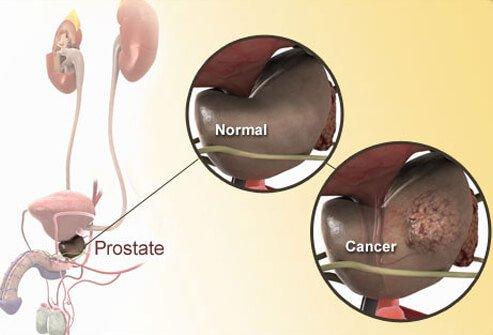
PROSTATE CANCER AND FERTILITY: Natural treatment
On 26/12/2019
PROSTATE CANCER AND FERTILITY: Natural Treatment
The prostate cancer is common cancer affecting the prostate, a gland in the male reproductive system. Cancer develops from the tissues of the prostate when cells there mutate and multiply out of control. These can then spread (metastasize) by migrating from the prostate to other parts of the body, especially the bones and lymph nodes in the pelvis.
Men with fertility problems are statistically more likely to develop prostate cancer than others, according to a Swedish study, which strengthens the hypothesis that these two health problems could have common causes. However, Dawasanté experts have a natural herbal treatment available to treat prostate cancer and improve fertility. Click on the image below to discover this natural treatment.
We deliver all over the world.
For more information, you can contact our experts on +229 51374202 direct line or by WhatsApp at the same number.
Herbal remedy for prostate cancer
Here we offer you a mixture of seeds, roots, and bark from Africa that can prevent and cure cancer (breast cancer, liver cancer, prostate cancer, tyroid cancer, cervical cancer. uterus, kidney cancer) and cardiovascular disease. These plants are very little known to scientists and they have extraordinary qualities against cancer. Their use against cancer is much more effective than chemotherapy.
Rich in antioxidants and trace elements, our plants for curing cancer delay the development of cancer cells thanks to a pigment it contains, phycocyanin. The root extract very selectively kills cells. Healthy cells are not killed, while cancer cells are. Our natural treatment kills cancer in an all-natural way without nausea, weight loss, or hair loss, while protecting the immune system.
No one can tell you that these herbs definitely cure any type of cancer, that would be lying. But thanks to these plants, you can improve the quality of life of patients by cancer, a fact verified. Best of all, they can even relieve some symptoms of cancer! How does it work?
These African plants are powerful antimicrobials and antifungals. They make it possible to stop metastatic processes by reducing the size of the tumors. This will significantly slow the advance of cancer.
However, even if these roots are very effective, we recommend that you accompany them with conventional treatments. We are definitely not asking you to give up your cancer treatment. Indeed, one should never completely leave aside a medical treatment to start a therapy resulting from the natural African herbal medicine. You will put your health and your life in danger. Our natural anti-cancer treatment should be combined with conventional therapy.
Sexuality and fertility
Prostate cancers and their treatments influence sexuality and fertility. Dedicated support for sexuality is in place, as well as measures to prevent infertility if you are considering a fatherhood project.
There is no harm or risk of having sex during treatment. In the case of brachytherapy treatment with permanent implants (iodine 125 grains), your doctor will give you the recommendations for protecting sexual intercourse. In addition, in the event of radiotherapy, chemotherapy, or hormone therapy, during treatments and six months after the end of treatments, it is necessary to use a suitable means of contraception (for you or your partner) in order to avoid any risk of fertilization from an altered sperm.
SEXUALITY DURING AND AFTER CANCER
After diagnosis, stress, worry, and fatigue often lead to decreased desire. But sexuality is not limited to sexual relations, it encompasses affection, tenderness, speech ... and over time, desire often returns little by little.
Physical difficulties, in particular erectile dysfunction or urinary continence, may appear. They are variable and depend on the erectile and urinary problems that you may have had before the treatments, as well as the treatments received. Erectile dysfunction can appear immediately after treatment or more gradually, in the months or even years that follow. Do not hesitate to talk to your medical team and ask all your questions. Doctors and health professionals are used to this type of request and will direct you to the solutions adapted to your situation and your needs.
If it is difficult to get an erection sufficient to have sex, you may be offered different treatments. Some are to be taken by mouth (5-phosphodiesterase inhibitors); others are injected into the cavernous bodies at the base of the penis (we speak of intracavernous injections), still others are presented as a gel to be inserted into the urinary meatus. A vacuum pump can also be a way to get erections.
FERTILITY
Cancer treatments most often lead to loss of fertility. If you are considering fatherhood, talk to your doctor before starting treatment in order to implement fertility preservation measures.
Freezing (cryopreserving) sperm is the most effective way to preserve male fertility before cancer treatment. The most common way to collect the semen sample is through masturbation. Men who cannot ejaculate can have vibratory or electrical stimulation to help them do so. The semen will stay frozen or stored until you need it. Freezing, even for many years, does not damage the sperm.
According to the Prostate Cancer Treatment Guide, hormone therapy generally has the lowest risk of fertility loss. If fertility problems exist, they will usually only be apparent during treatment. Then the ability to produce sperm should return to normal. For those undergoing radiation therapy, the risk of fertility loss is highly dependent on the dose of radiation received. If fertility can return to normal, it may take up to five years. What is promising, however, is that more precise dosage planning has started to reduce this risk of infertility, the PCF noted.
Infertility
Infertility or the inability to conceive is a potential side effect of prostatectomy or radiation therapy.
The surgery involves removing the prostate as well as the seminal vesicles that produce semen. Men who have had a radical prostatectomy can still reach orgasm but without ejaculation.
Radiation therapy can affect the transport of semen. Men who want to father a child should consider freezing their sperm.
We deliver all over the world.
For more information, you can contact our experts on +229 51374202 direct line or by WhatsApp at the same number.

PROSTATE CANCER DIET: Natural treatment
On 26/12/2019
What is Prostate Cancer?
The prostate is a gland in the male reproductive system. It is located just below the bladder and, like a ring, it surrounds the urethra, the channel through which urine and semen exit the body. The role of the prostate is to produce prostatic fluid, one of the components of semen along with seminal fluid and sperm, to temporarily store semen before ejaculation, and then to contract at the time of ejaculation, thus participating in the process. expulsion of semen.
Prostate cancer is the most common type of cancer in men: it is estimated that 1 in 7 men will be diagnosed with it, most often in their sixties. Although no specific cause has been discovered, there is a genetic predisposition.
Most prostate cancers grow very slowly. Moreover, the vast majority of men in whom this cancer is detected will die of another cause. Often, the tumor remains in the prostate and has limited health effects, sometimes causing urinary or erectile dysfunction. However, some cancers can grow and spread more quickly.
Treatment
We offer you here a mixture of seeds, roots and bark from Africa which can prevent and cure cancer (breast cancer, liver cancer, prostate cancer, thyroid cancer, cervical cancer. uterus, kidney cancer) and cardiovascular disease. These plants are very little known to scientists and they have extraordinary qualities against cancer. Their use of cancer is much more effective than chemotherapy.
Rich in antioxidants and trace elements, our plants for curing cancer delay the development of cancer cells thanks to a pigment they contain, phycocyanin. The root extract very selectively kills cells. Healthy cells are not killed, while cancer cells are. Our natural treatment kills cancer in the all-natural way without nausea, weight loss, or hair loss while protecting the immune system.
No one can tell you that these herbs definitely cure any type of cancer, that would be lying. But thanks to these herbs, you can improve the quality of life of cancer patients, a proven fact. Best of all, they can even relieve some symptoms of cancer.
Click on the image below to discover our treatment against prostate cancer
We deliver all over the world.
For more information, you can contact our experts on +229 51374202 direct line or by WhatsApp at the same number.
Food and Nutrition
Good nutrition can help reduce the risk of prostate cancer, slow disease progression, and prevent aggressive disease. In this section, we discuss healthy diet recommendations for good prostate health and healthy diet guidelines during treatment for prostate cancer. However, these tips should never be used as a substitute for treatment.
Healthy diet
We know that improved nutrition reduces the risk of heart disease, cancer, diabetes, and obesity and generally improves the overall quality of life. It is estimated that one-third of cancer deaths are attributable to the diet of adults, including the effects of diet on obesity. In addition, a healthy diet helps increase energy levels, aids recovery and strengthens the immune system. According to the World Health Organization, a person with a body mass index (BMI) of 30 or more is considered obese.
Experts now believe that our diet choices account for the vast majority of prostate cancer cases. It is important to assess food choices when it comes to prostate cancer risk. Scientists have discovered a list of anti-cancer superfoods and supplements to optimize your diet while discovering foods and supplements that may actually contribute to cancer risk and aggression.
Guidelines for healthy eating
Your diet should be:
- Mainly herbal
- Include lots of fruits and vegetables
- Rich in fiber
- · Low fat
- Limited in the number of simple sugars
Diet tips for prostate health
Eat fruits and vegetables
Fruits and vegetables contain large amounts of substances that fight cancer and reduce inflammation, such as vitamins, polyphenols, antioxidants, minerals and natural fibers. Most men and women do not eat the recommended daily allowance of fruits and vegetables. If you are working to change the way you eat, try to make manageable changes. Try to include a variety of fruits and vegetables in your diet.
· Cruciferous vegetables (such as broccoli, cauliflower, Brussels sprouts, kale and cabbage) have phytochemical properties that reduce oxidative stress or oxygen free radicals in the body, reducing the risk of prostate cancer and its aggressiveness.
· Carrots are rich in nutrients and contain beta-carotene and antioxidants falcarinol that reduces cancer risk
· Tomatoes are a rich source of a phytochemical called lycopene, which attacks free radicals and helps the body reduce the risk of prostate cancer and its attacks.
· The fungi help the fight against cancer by strengthening the immune system with a set of compounds called beta-glucans and proteins called lectins, which have demonstrated their ability to attack cancer cells
Pomegranate, especially pomegranate juice, has been shown to slow down PSA doubling time and may help prevent recurrence of prostate cancer after primary treatment.
· Grapes and grape juice are rich sources of resveratrol, a type of natural phytochemical that belongs to a larger group of phytochemicals called polyphenols, which have potent antioxidant and anti-inflammatory properties.
· Grapefruit contains several phytochemicals, including naringin limonin, beta-carotene and lycopene
· Oranges, lemons and other citrus fruits help protect against free radicals DNA damaging because they contain hundreds of bioactive compounds, including flavonoids and monoterpenes
Avocados contain the highest amount of luteinutein carotenoid of all fruits
· The peppers and jalapenos contain a chemical, capsaicin, which neutralizes some carcinogens
· Apples are a good source of fiber, vitamin C and contain quercetin, a flavonoid that has both anti-oxidant and anti-inflammatory.
· Berries (raspberries and blueberries) are an excellent source of vitamins C and K, manganese and fiber, and blueberries are among the fruits with the highest antioxidant power due to the many phytochemicals they contain.
v Limit the consumption of animal proteins
Diets high in red meat, dairy products and animal fat have often been linked to the development of prostate cancer. Red meat (such as beef, pork, and lamb) is particularly linked to aggressive prostate cancer.
v Look for vegetable proteins
Plant-based proteins such as beans, flax, and walnuts contain quercetin and lignans which inhibit the growth of many types of cancer, including prostate cancer.
v Green tea
Green tea contains polyphenols and flavonoids which are powerful antioxidants. Tea is the best source of catechins studied for their anticancer properties. Green tea has been shown to slow down and / or prevent the development of prostate cancer.
v Whole grains
Whole grains include brown rice, oatmeal, corn, whole wheat bread, barley, bulgar, kasha, millet, farro, quinoa and more. Whole grains are great sources of fiber and magnesium and provide protein. Choose foods made from whole grains rather than processed foods.
v Limit sugary drinks
Reduce Surgery Soft drinks and clean water can speed up metabolism and rid the body of carcinogens.
v Choose organic foods when possible
Foods from organic farming are free from harmful chemicals and pesticides, including BPA, a known carcinogen of prostate cancer. Foods from organic farming contain more nutrients than they tend to taste better.
We deliver all over the world.
For more information, you can contact our experts on +229 51374202 direct line or by WhatsApp at the same number.
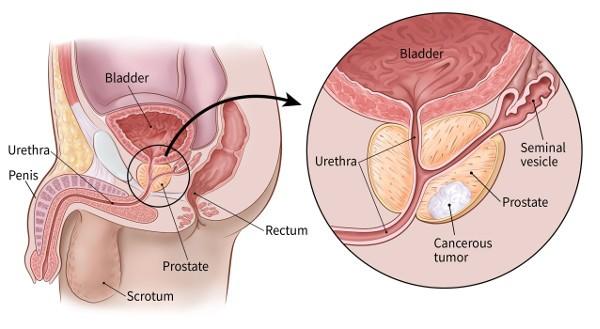
PROSTATE CANCER: TERMINAL PHASE SYMPTOMS
On 26/12/2019
PROSTATE CANCER: TERMINAL PHASE SYMPTOMS
Prostate cancer is the most common cancer, both in men and in the general population. First signs, causes, diagnosis and treatment ... Lighting from Pierre-Olivier Bosset, urological surgeon.
Definition: location and role of the prostate
The prostate is a gland in the male reproductive system that plays a hormonal role and in the production of sperm. The appearance of prostate cancer corresponds to the transformation of prostate cells. Initially healthy, they multiply in an anarchic manner until they form a malignant tumor. In 95% of cases, the cancers are in the histological form of adenocarcinoma which develops from the cells making up the lining tissue of the prostate. If cancer starts out in the prostate, the tumor can then grow and invade other parts of the body.
Stadiums
The course of this disease is often slow. As with all cancers, there are several stages of development. The evolution of cancer can be local or distant depending on the time of diagnosis. Prostate cancer can range from stage 1 to 4 depending on how far it has spread. It is with a view to saving more human lives that Dawasanté experts provide you with a mixture of seeds, roots and bark from Africa to prevent and cure prostate cancer. Click on the image below to discover this natural treatment
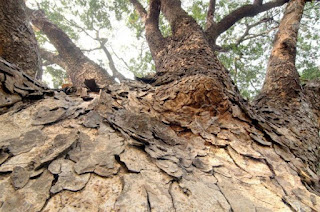
Prostate cancer in numbers
Cancer of the prostate is the most common cancer. In 2015, 50,430 new cases were diagnosed (InVs figures). With 8,512 deaths in 2015, it ranks third among cancer deaths in humans. More than 5 out of 10 prostate cancers are linked to a hereditary predisposition. The average age of prostate cancer is around 60-70 years, but some men are affected at an earlier age. A decrease in mortality from prostate cancer has been observed since 2000. The improvement in treatment largely explains the reasons for this decrease.
Symptoms
Often, early-stage prostate cancer does not have any symptoms or signs. It is usually detected by a PSA scan or by a DRE, a process called detection. If prostate cancer is suspected based on a PSA or DRE scan, more checks and tests are needed to diagnose prostate cancer. When prostate cancer effectively causes symptoms or signs, it is usually diagnosed at a later stage. These signs and symptoms include:
Frequent urination
Poor or interrupted urination flow, or need to exert force to empty the bladder.
Urge to urinate frequently at night.
Blood in the urine
Blood in seminal fluid.
· New appearance of erectile dysfunction.
Pain or burning sensation when urinating, which is much less common.
Discomfort or pain when sitting caused by an enlarged prostate.
- voiding pain,
- hematuria,
- dysuria.
Sometimes men with prostate cancer don't have any of these changes. Other non-cancerous prostate conditions, such as BPH or an enlarged prostate, can produce similar symptoms. Or the cause of these symptoms may be some other medical condition other than cancer. Urinary symptoms can also result from a bladder infection or other conditions.
If cancer has spread outside of the prostate, a man may feel:
Pain in the back, hips, thighs, shoulders, or other bones.
Swelling or accumulation of fluid in the legs or feet.
· Weight loss for no apparent reason.
· Tired
· Change bowel habits.
If you are concerned about any changes you have experienced, tell your doctor Your doctor will ask you since when and how often you have had the symptom (s), among other questions. This helps to find the cause of the problem, which is called the diagnosis.
This cancer is sometimes never discovered during the patient's lifetime. It is therefore only at a more advanced stage of development that the first symptoms appear
PSA screening and assay: recommendations on age and frequency
As age is a major risk factor, men over 60 are subject to increased medical surveillance. The rectal examination is the most effective method for detecting the possible presence of a mass in the prostate.
Regularly or in case of doubt, the doctor also recommends a blood test of the level of Prostate Specific Antigen (PSA), the main reflection of the functioning of the prostate gland. " In the interview, it is also necessary to look for other risk factors for prostate cancer: family background (history of prostate cancer) and ethnic origins (DOM-TOM, Africans) ", explains Dr. Pierre-Olivier Bosset, surgeon urologist. The PSA assay, a prostate-specific antigen, is a protein produced exclusively by the prostate which makes it possible to suggest the diagnosis and to monitor the progression of prostate cancer. This is a very sensitive assay in cancer screening.
THE PHASES OF CANCER
The stages of cancer range from the first mutations of cells until the disease reaches its final stage. This is known as natural history.
WHAT ARE THE PHASES OF CANCER?
The duration of this process in adults depends on the type of cancer and ranges from a few months to several decades. In the case of children, this whole process goes much faster and may even last only a few months. In fact, the cells that make up tumors in children are more immature cells that divide and multiply more quickly than those that make up adult cancers so that tumors develop and grow in children. in a short period of time.
STEP 0
The first thing that happens is the cellular changes that give the cells the characteristics of malignancy, that is, uncontrolled multiplication and the ability to invade. This is the longest phase of the disease and is called the induction phase. In no case is it diagnosable or produces symptoms. This phase can last up to 30 years.
STEP I
The second step is called the "in situ" phase. It is characterized by the existence of the microscopic cancerous lesion located in the tissue where it originates. In adults, it usually lasts between 5 and 10 years depending on the type of cancer.
In it, there are no symptoms or discomfort in the patient. In some cases, such as breast, cervical or colon cancer, the disease can be diagnosed at this stage using techniques that allow for early detection.
STEP-II
Subsequently, the lesion begins to spread outside its place of origin and invades adjacent tissues or organs. We are facing the local invasion phase. In adulthood, it lasts between 1 and 5 years. The appearance of symptoms of the disease depends on the type of cancer, how it is growing, and where it is.
METASTASIS
Finally, the disease spreads outside its place of origin as distant tumor lesions called metastases. This is the stage of the remote invasion. The symptomatology presented by the patient is generally complex. It depends on the type of tumor, location and extent of metastasis.
STEP IV: TERMINAL PHASE
This phase is characterized by the existence of advanced, irreversible and irreversible (incurable) cancer. It is also referred to as terminal cancer.
It does not respond to commonly used treatments. It is accompanied by multiple symptoms that cause great discomfort in the patient, affecting his quality of life and that of his family.
It is a time of intense pain, but also of transcendental importance. If the patient and his family have prepared, this time makes it easier to reunite with oneself and with loved ones.
The area of medicine that deals with the care of patients at this stage of illness is that of palliative care or palliative medicine.
HOW DOES CANCER EVOLVE?
The course of each cancer is subject to multiple factors that will interact with each other. These factors vary depending on the tumor and the patient.
Remember that " there are no diseases, but sick people ."
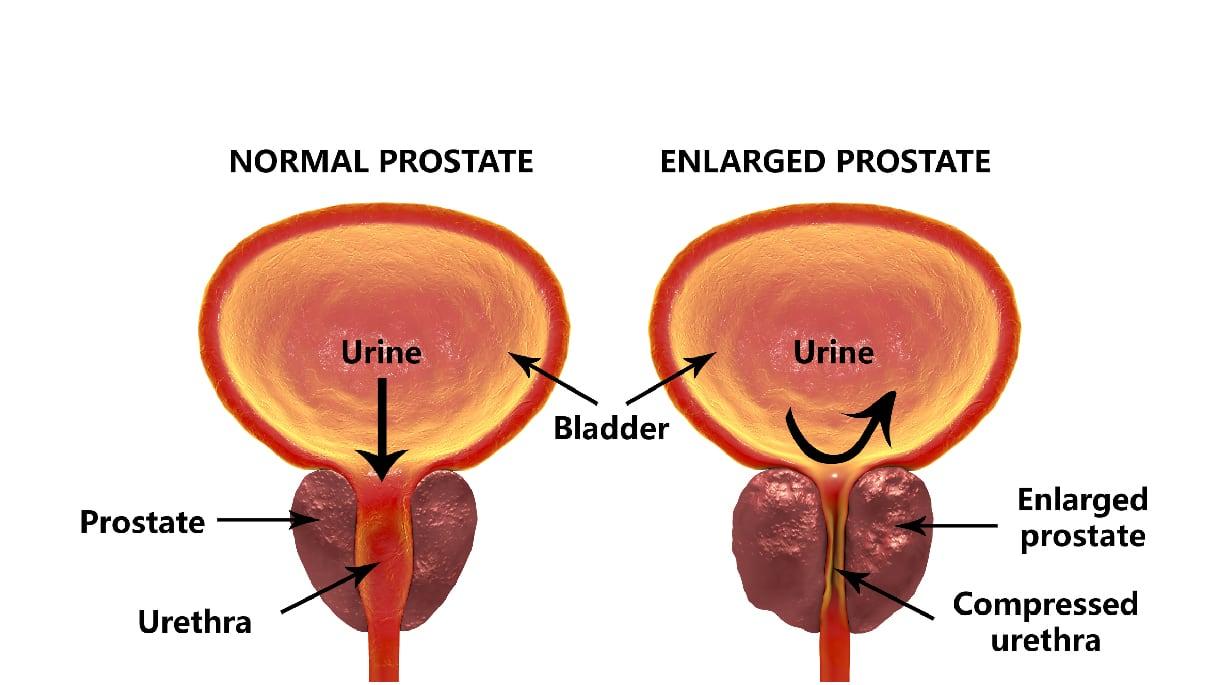
PROSTATE CANCER AND RADIATION THERAPY
On 26/12/2019
PROSTATE CANCER AND RADIOTHERAPY
General
The prostate cancer is cancer frequently touching the prostate, a gland of the reproductive system of man. Cancer develops from the tissues of the prostate when cells there mutate and multiply out of control. These can then spread ( metastasize ) by migrating from the prostate to other parts of the body, especially the bones and lymph nodes in the pelvis.
Malignant prostate cancer occurs independently of benign prostatic hyperplasia (BPH), or prostatic adenoma. In the vast majority of cases, it is an adenocarcinoma, especially of the acinar type. However, Dawasanté experts have a natural African plant-based treatment to permanently cure prostate cancer and the effects of radiotherapy. Click on the image below to discover this natural treatment.
We deliver all over the world.
For more information, you can contact our experts on +229 51374202 direct line or by WhatsApp at the same number.
Malignant prostate cancer can cause pain, difficulty urinating, and erectile dysfunction, among other things. Symptoms originating from an adenocarcinoma of the prostate often signal an advanced stage of the disease. Other prostate diseases cause the same symptoms: pelvic pain in prostatitis and difficulty urinating in BPH.
The most common treatments are surgery (radical prostatectomy), radiotherapy ( external radiotherapy and brachytherapy, in particular) and hormone therapy. The chemotherapy is used only in advanced forms. Here we will talk about radiotherapy. However, if you feel the need to be analyzed and treated, the Dawabio center is at your disposal to provide you with a treatment worthy of the name, natural of course.
Causes, risk factors
Its causes are still poorly understood, and could often be multiple:
- a genetic predisposition and the responsibility of certain genes seem possible but weakly correlated with the onset of the disease.
In particular, a mutation on chromosome 8 could explain the greater frequency of this cancer in black Americans; - A link with bioavailable testosterone seems frequent. Charles Brenton Huggins (inventor of hormone therapy for cancer) first (from the 1940s and based on studies of metastatic prostate cancer) concluded that this cancer was induced by excess testosterone (or facilitated by this hormone). But more recently (the 2010s) the available data suggests that a more common cause is testosterone deficiency. Low testosterone before surgery for this cancer was linked in 2010 to an increased risk of tumor aggressiveness
- higher adult height correlates with a higher risk of prostate cancer;
- Nutritional factors have been mentioned. Certain foods seem to increase the risk of prostate cancer;
According to several studies, the consumption of cow's milk increases this risk after 50 years, but other studies consider that this link is not significant or would be weak. The increased risk appears to be related to the increased level of IGF-1 in the blood, which itself correlates with milk consumption. Some studies suggest that casein may also have an effect on prostate cancer. Excessive dietary intake of phytanic acid from dairy products, especially butter has also been linked (2012) to a high risk of prostate cancer; for these reasons, in the name of the precautionary principle, the consumption of dairy products is no longer recommended for men. Overconsumption of calcium appears to be an established risk factor. Several scientific studies retain milk as a risk factor for hormone-dependent cancers such as those of the prostate, ovaries and breast.
Other foods seem to play a protective role; the lycopene for example, dried fruits, legumes ;
- similarly, physical exercise may have a slightly protective effect;
- an endocrine disrupting effect of certain products ( pesticides in particular) could be involved;
- exposure to pesticides is a possible factor because agricultural populations are over-represented for this cancer, which remains etiologically poorly understood, and which therefore still requires research, in particular on gene-environment relationships and interactions . The cadmium very present in phosphate fertilizers could also be involved;
- The smoking ;
- a viral infection could sometimes be involved (unless it is favored by the process of cancerization or a decrease in immunity which also favored cancer);
the XMRV retrovirus ( Xenotropic MLV - Related Virus, variant of MLV ( murine leukemia virus responsible for leukemia in mice) and capable of infecting humans, was detected in 2006 in certain tumors of the prostate. It belongs to the gammaretrovirus genus already associated with leukemia and certain cancers in rodents, felines, and primates.
According to a US study published in 2010 and involving 334 human prostate tissue samples, proteins appearing to come from this virus were found in 23% of cancerous tissue (against 4% of "healthy" samples). And they were more present in the more aggressive tumors. It remains to be identified whether the virus is the cause or one of the causes of these cancers or if it infects the prostate of patients because they have previously weakened immunity. If it is involved, we may have additional biomarkers for this cancer or even new avenues of prevention; - The night work is also mentioned (as for other cancers called "hormone").
- according to a study published in 2004, more frequent ejaculations are associated with a reduced risk of prostate cancer.
What are its symptoms and how is it detected?
This cancer is most often asymptomatic, that is to say, it is discovered when it does not cause any manifestation of its own. It is most often found:
- during blood tests including the study of PSA (specific antigen of the prostate, whose predictive value and use, without proven benefit in terms of public health , have recently been called into question). PSA is a protein normally secreted by prostate cells, but a cancer cell secretes 10 times more than a normal cell. This property has raised many hopes in terms of screening. The blood level of PSA can however be increased by many other factors (prostate volume, infections and / or inflammations, mechanical constraints (rectal examination, other) ...) or decreased by certain treatments for benign hypertrophy ( finasteride). The significance thresholds are therefore difficult to establish. It is accepted, however, that a PSA level of between 4 and 10 ng/ml is doubtful, but that it is clearly significant beyond. Some authors have proposed to relate the rate to the effective weight of the prostate or to assess the free PSA / total PSA ratio, or even the growth kinetics of the rate over 2 years.
A still uncertain marker for screening, the PSA level is, on the other hand, an essential indicator for the monitoring and treatment of declared cancers; - during a digital rectal examination; performed routinely, or due to symptoms related to another disease (in particular benign prostatic hypertrophy);
- fortuitously, on parts of prostatic resection during the surgical treatment of prostatic adenoma.
When symptomatic, prostate cancer is most often at an advanced stage. It can lead to:
- acute urinary retention ;
- hematuria ;
- sexual impotence (erectile dysfunction);
- a deterioration of the general condition ;
- of pain and/or the malfunction or failure of other organs related to the presence of metastases .
Radiotherapy is one of the treatments conventionally offered in prostate cancer
External or internal radiotherapy?
A second option in the treatment of localized prostate cancer is radiation therapy.
Two types of radiotherapy are used to treat this pathology, external radiotherapy and internal radiotherapy also called brachytherapy or brachytherapy.
The external radiation corresponds to conventional radiation: radiation from an external source are directed so focused on the patient's tumor. The dose of radiation needed to destroy the tumor is delivered over several sessions, often five per week for one to two months.
Internal radiation therapy is based on the implantation of radioactive needles into the prostate. The needles are put in place during surgery, under general anesthesia. This method has the advantage of sparing the organs neighboring the prostate since the radioactive radiation is delivered directly into the prostate gland.
The various complications of radiotherapy are described in the chapter devoted to radiotherapy and accessible in the treatment section itself in the health section of the site.
External radiotherapy and brachytherapy are among the potentially curative therapeutic modalities offered in the treatment of non-metastatic prostate cancer. Few data have been published on their management and their prevention is essential. An assessment as precise as possible of the risk / benefit ratio is necessary before any treatment decision and clear and objective information for the patient must be made, including the risk of late morbidity and the possible impact of late side effects on quality of life.
The immediate digestive side effects during irradiation are very frequent and almost constant even if they are mostly very moderate and with limited impact. They consist of transit disorders sometimes linked to enterocolitis and accompanied by abdominal pain and above all by a rectal syndrome with a fractionation of the stools which become mucus and some false needs. Patients with hemorrhoids develop anal discomfort earlier and more readily, sometimes with bleeding and should be treated early.
Most of these side effects disappear a few weeks after the end of the irradiation.
Late complications are much rarer, around 7 to 10% for grade 1-2 complications and have become exceptional for serious complications (3.5% grade 3 and 0.5% grade 4). These late complications, when they occur, are essentially anorectal, with the risk of enteritis only occurring when large volumes of hail have been included in a large volume of pelvic irradiation. The evaluation of these complications is done according to the score, LENT SOMA (Late Effects on Normal Tissue Scale) of the RTOG-EORTC:
Grade 1: no change.
Grade 2: mild diarrhea; some colic pain; less than 5 bowel movements per day; mucus stool.
Grade 3: moderate diarrhea; more than 5 bowel movements per day; mucous or haemorrhagic proctitis.
Grade 4: obstruction or rectal bleeding requiring surgery.
Grade 5: necrosis, perforation, fistula.
Urinary complications from radiotherapy are rare even if during irradiation, irritative phenomena are very frequent. However, it is the rule not to irradiate a very large adenomatous prostate in patients with high IPSS, otherwise, a retention syndrome may occur during treatment. The removal of the previous obstacle will call for the usual medical or surgical treatments. The start of irradiation should be postponed after a transurethral resection to avoid increasing the risk of urinary incontinence or subsequent stenosis and will not begin until after complete healing of the resection pocket, generally in the third month.
We deliver all over the world.
For more information, you can contact our experts on +229 51374202 direct line or by WhatsApp at the same number.
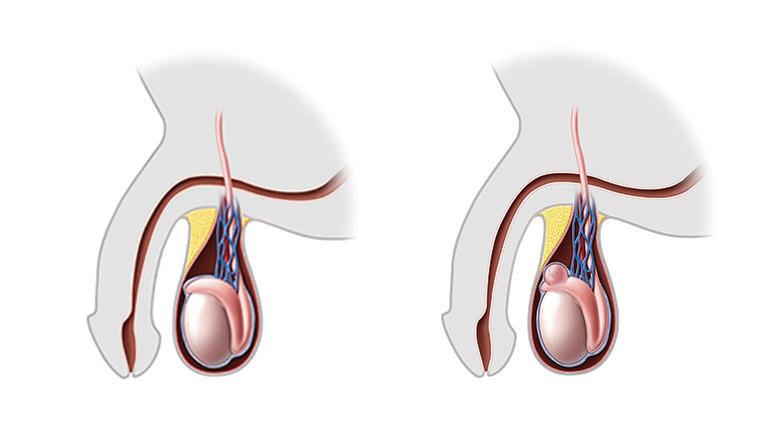
Epididymis cyst: causes, symptoms, natural remedies and advice
On 26/12/2019
The epididymis (from the Greek epididumis) is an organ of the male reproductive system located in the wall of the testicle.
The epididymis cyst or also called testicular cyst or spermatocele. Develops at the expense of the swollen part of the upper part or head of the epididymis. There may be one or more cysts within the same epididymis. Epididymal cysts can occur at any age. The epididymis is located in the wall of the testicle and is essential for the maturation and transport of sperm. Relatively frequent, these cysts are sometimes very painful and require an intervention.
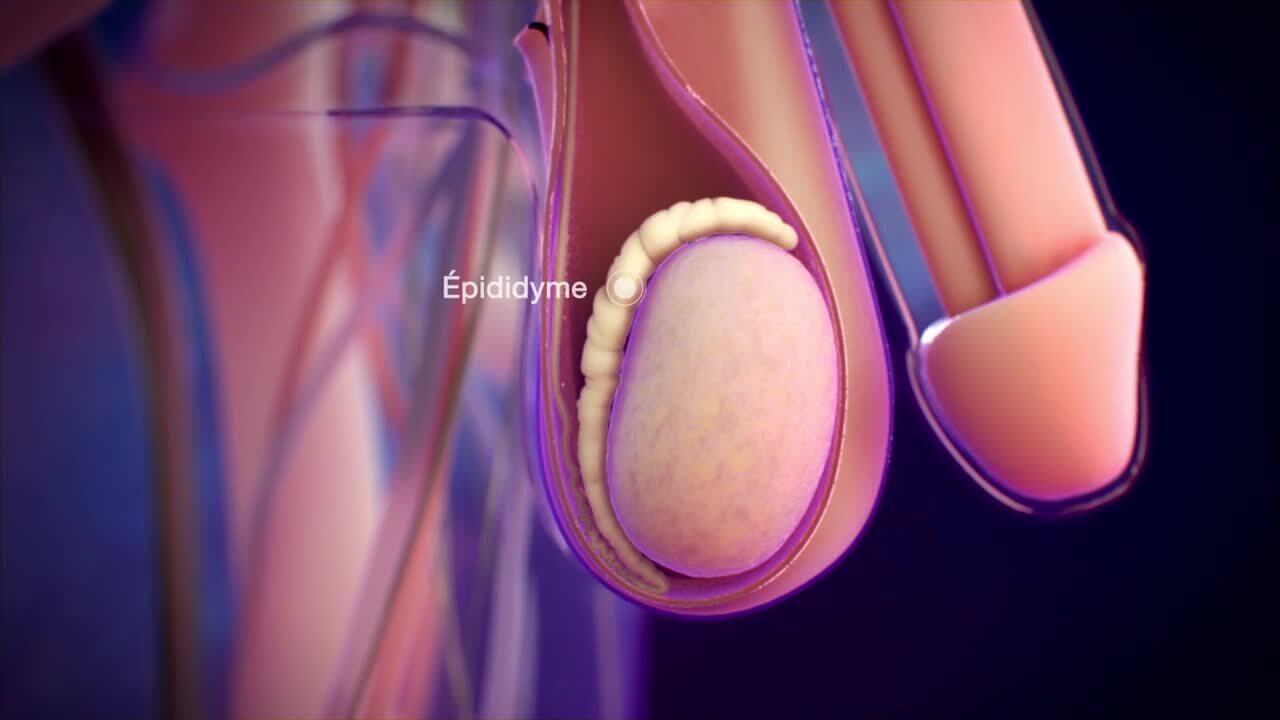
However, the experts of Dawasanté provide you with a natural treatment based on medicinal plant to cure definitively the cysts of the epididymis without surgery. Click on the image below to discover this natural treatment.
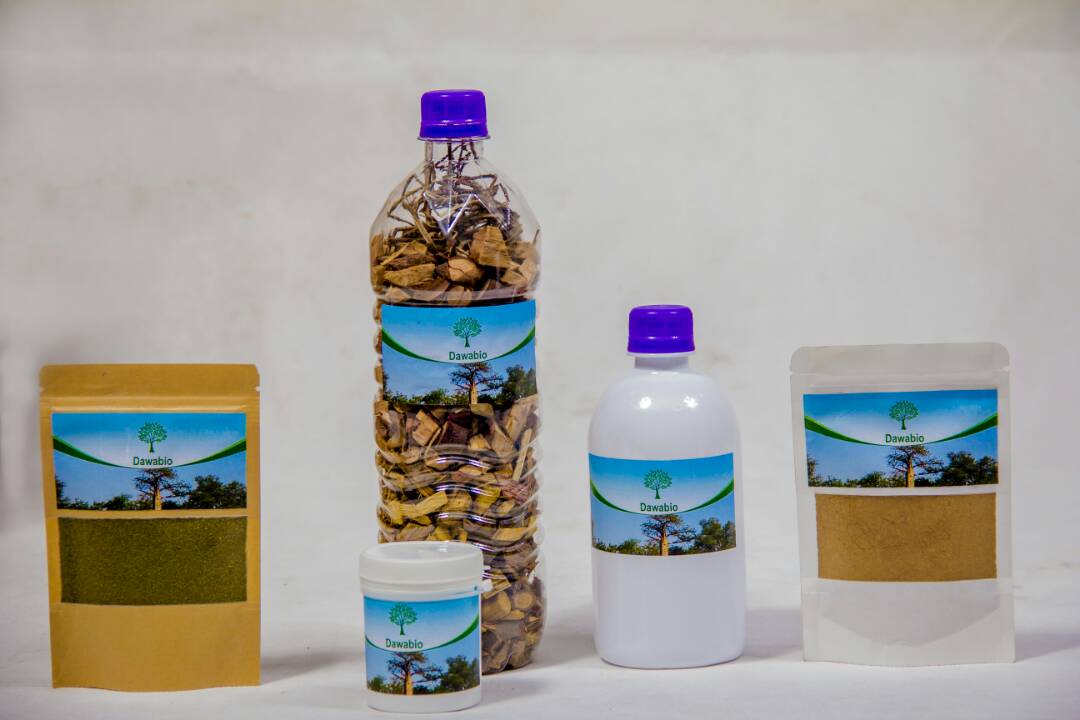
The testicular cyst in men is a benign neoplasm.
The appendix itself is a long, narrow canal that serves to develop, accumulate and promote sperm. It also produces the fluid necessary for the maturation and motor activity of male sex cells. Under normal conditions, should be emptied regularly exit channels of male sperm in good body health, but under certain violations of the dander filled with sperm, and it appears cystic formation with capsular connective tissue sheath.
Further increase in the cyst causes excessive pressure on the vas deferens of the epididymis, which leads to disruption of the normal flow of seminal fluid. This can cause a breakdown in reproductive function in men.
Epididymal cysts usually originate in adolescence, progressing and developing over time. The peak of development occurs at the age of 30 to 40 years and by the age of 50 years, a full clinical picture of the disease has been observed, which can affect about 30% of the total male population. It is often caused by a sexually transmitted infection (STI) but can also have other causes
We have a very effective natural treatment to cure epididymal cysts permanently.
Order it and start the natural Epididymal Cyst treatment early. Support is offered during the whole period of its intake. To reach us, click on the WhatsApp button in the right corner of your screen or contact us at +229 66 23 89 56
We have representation in all African countries and actively in the following countries: Cameroon, Ivory Coast, Mali, Senegal, Burkina Faso, Togo, Kenya, Nigeria, Gabon, Central African Republic, Benin, Chad, Congo-Brazzaville and Kinshasa. So rest assured that you will receive your products immediately after your order.
Delivery is free of charge anywhere in the world.
Causes of the epididymis cyst
There are several reasons and options for the development of epididymis cysts:
Epididymis cyst may form before birth, as a result of some defects in the period of intra-uterine growth of the embryo (for example, non-infection of the parameconephrotic canal). Cysts of this type contain a sperm-free fluid in their cavity;
The formation of epididymis cysts in 40% of cases can be preceded by scrotal traumatic lesions, infectious and inflammatory processes in the genital region, which lead to the coalescence of one or two deferential ducts. As a result, the output of seminal fluid overlaps, and the accumulation of male sex cells in the channel light. The walls of the canal, respectively, are stretched and a cyst is formed, containing in its cavity seminal fluid accumulated with neutral or alkaline activity.
In addition to sperm, lipid cells, leukocytes and epithelial particles can be found in the contents of the cyst, from which the walls of the cystic cavity are aligned.
- Ethnic and socio-economic causes:
Several studies have shown the impact of these factors in the occurrence of MIT, without showing the causal link. Predominance in black males, and low socioeconomic status was observed.
- Genetic Causes:
Several genes are implicated in the occurrence of MIT: +Senseless mutation of the gene Phosphodiesterase 11A(PDE11A) which encodes a protein that plays a role in regulating the intracellular concentration of cAMP and cGMP. [34] + other mutations of other genes have been identified including the mutation of the gene SLC34A2 and GALNT3, both encode a protein involved in phosphate transport and metabolism
- Family history of first degree.
Other contributing factors are discussed such as certain environmental factors such as maternal estrogen intake during pregnancy, exposure to certain chemical industry substances, or to certain substances in the environment (insecticides, herbicides).
- Atypical acute scholarship:
The problem arises in a young man with an acute sore bursa, but without the clinical signs characteristic of a twisted spermatic cord or an orchi-epididymitis. This is the problem of differential diagnosis with a germinal tumor with acute revelation (about 10% of testicular tumors).
- Important risk factors include:
Factors that increase the risk of testicular cyst vary due to various causes of testicular abnormalities. History of testicular cancer or contralateral intratubular germinal neoplasia.
The presence of gonadal dysgenesia syndrome associating more or less:
a history of cryptorchidia (homo- or contralateral). Present in almost 10% of cases, it multiplies the cancer risk by 5 to 10 times depending on the age and date of treatment. Surgical testicular lowering, if it does not reduce the risk of cancer, has the advantage of facilitating testicular palpation;
. testicular atrophy;
. a hypospade;
. Fertility problems.
. Klinefelter syndrome.
. Infertility.
Testis not lowered or retracted
An undrawn testicle does not leave the abdomen and does not enter the scrotum during fetal development or early childhood. A retractable testicle descends into the scrotum but withdraws into the abdomen. Either may increase the risk of:
- Inguinal hernia
- Testicular torsion
- Testicular cancer
- Anomalies present at birth
- Abnormalities of the testicles, penis or kidneys present at birth (congenital) could increase the risk of scrotal mass and testicular cancer later in life.
Symptoms of epididymis cysts
Epididymal cysts usually have no symptoms before forming in the epididymis. Once formed, you may notice a ball the size of a pea (or larger) behind, above or below one of your testicles where sperm is produced. For spermatoceles, the cyst is usually on the top of the testicles.
Other symptoms of an epididymal cyst may include:
- Dull pain in the scrotum (the pocket containing the testicles)
- A feeling of heaviness in the scrotum
- Redness in the region of the scrotum
- Increased pressure at the bottom of the penis
- Sensitive or swollen epididymis
- Soft, swollen or hardened testicles
- Pain in the groin or lower back and abdomen
Epididymal cysts generally do not present acute and intense pain symptoms and are generally completely painless. If any of the above symptoms occur, a complete and immediate examination by a urologist is warranted.
We have a very effective natural treatment to cure epididymal cysts permanently.
Order it and start the natural Epididymal Cyst treatment early. Support is offered during the whole period of its intake. To reach us, click on the WhatsApp button in the right corner of your screen or contact us at +229 66 23 89 56
We have representation in all African countries and actively in the following countries: Cameroon, Ivory Coast, Mali, Senegal, Burkina Faso, Togo, Kenya, Nigeria, Gabon, Central African Republic, Benin, Chad, Congo-Brazzaville and Kinshasa. So rest assured that you will receive your products immediately after your order.
Delivery is free of charge anywhere in the world.
NATURAL REMEDIES FOR THE EPIDIDYMIS CYST
- Amanita
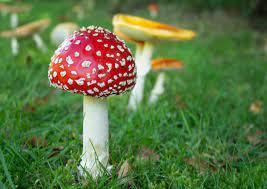 You can get rid of the pathology without surgery with the help of Amanita. To dye, you must take fresh mushrooms, clean well so that there is no dirt and forest debris, and put it in a pot to the brim. Pour alcohol on the edges – at least 70%. In extreme cases, you can use regular vodka. After the container is closed and put in a dark place for a period of at least fourteen days. Insist until the liquid acquires a characteristic red-brown hue and a particular smell. As soon as the desired effect is achieved, the dye must be filtered and the resulting liquid poured into bottles.
You can get rid of the pathology without surgery with the help of Amanita. To dye, you must take fresh mushrooms, clean well so that there is no dirt and forest debris, and put it in a pot to the brim. Pour alcohol on the edges – at least 70%. In extreme cases, you can use regular vodka. After the container is closed and put in a dark place for a period of at least fourteen days. Insist until the liquid acquires a characteristic red-brown hue and a particular smell. As soon as the desired effect is achieved, the dye must be filtered and the resulting liquid poured into bottles.
To cure spermatocele in men, it is necessary to follow a certain pattern of consumption of dye, which first increases and then decreases. That is to say, on the first day of administration – 1 drop, the second – 2 and so on up to 15 drops in one dose, then, on the contrary, from 15 drops a day to one at the end. Thus, the duration of treatment should be 30 days.
- Quercetin
 Quercetin can also help fight inflammation associated with the epididymis cyst.
Quercetin can also help fight inflammation associated with the epididymis cyst.
- Arnica Mountain
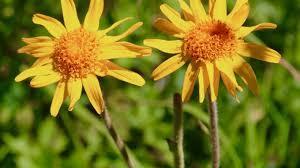 Another equally effective alternative therapy method is to add the mountain arnica flowers to a glass of boiling water. Let stand for 2 hours. You should drink 1 tablespoon daily three times a day, but only after eating.
Another equally effective alternative therapy method is to add the mountain arnica flowers to a glass of boiling water. Let stand for 2 hours. You should drink 1 tablespoon daily three times a day, but only after eating.
- Turmeric and Curcumin
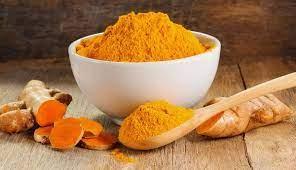 Turmeric and curcumin can help reduce inflammation and can be useful for men with epididymis. Curcumin can be a great help in reducing chronic inflammation, which is good for epididymitis.
Turmeric and curcumin can help reduce inflammation and can be useful for men with epididymis. Curcumin can be a great help in reducing chronic inflammation, which is good for epididymitis.
- Jasmine
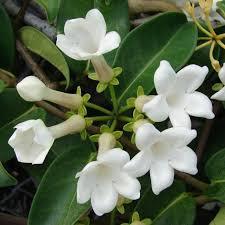 You can also treat a cyst with jasmine. To do this, prepare the ointment. About fifty grams of the plant’s flowers are taken; placed in a bowl and poured with a glass of oil on top (it is best to use olive oil). The mixture must be well infused, so you must wait at least ten days before using the ointment. After this time, the mass must be filtered, after which you can use the tool; it is rubbed daily at the site of localization of the cyst, mainly in the morning. This treatment method works well when combined with other popular remedies; for example, decoctions, dyes, etc.
You can also treat a cyst with jasmine. To do this, prepare the ointment. About fifty grams of the plant’s flowers are taken; placed in a bowl and poured with a glass of oil on top (it is best to use olive oil). The mixture must be well infused, so you must wait at least ten days before using the ointment. After this time, the mass must be filtered, after which you can use the tool; it is rubbed daily at the site of localization of the cyst, mainly in the morning. This treatment method works well when combined with other popular remedies; for example, decoctions, dyes, etc.
We have a very effective natural treatment to cure epididymal cysts permanently.
Order it and start the natural Epididymal Cyst treatment early. Support is offered during the whole period of its intake. To reach us, click on the WhatsApp button in the right corner of your screen or contact us at +229 66 23 89 56
We have representation in all African countries and actively in the following countries: Cameroon, Ivory Coast, Mali, Senegal, Burkina Faso, Togo, Kenya, Nigeria, Gabon, Central African Republic, Benin, Chad, Congo-Brazzaville and Kinshasa. So rest assured that you will receive your products immediately after your order.
Delivery is free of charge anywhere in the world.
- The buchu leaf
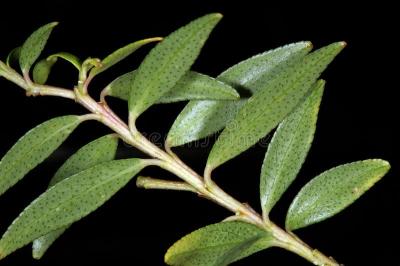 The buchu leaf is also good for treatment as it is a disinfectant and diuretic of the urinary tract. It is used to treat prostate inflammation and urinary tract infections.
The buchu leaf is also good for treatment as it is a disinfectant and diuretic of the urinary tract. It is used to treat prostate inflammation and urinary tract infections.
- Chestnut
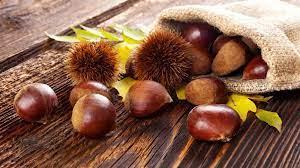 In addition, for the treatment of the pathology, the chestnut juice of the plant flowers is perfect. It is necessary to collect fresh flowers; to squeeze all the juice and to consume 20 drops a day, previously diluted with water.
In addition, for the treatment of the pathology, the chestnut juice of the plant flowers is perfect. It is necessary to collect fresh flowers; to squeeze all the juice and to consume 20 drops a day, previously diluted with water.
- Traditional plantain seed recipes
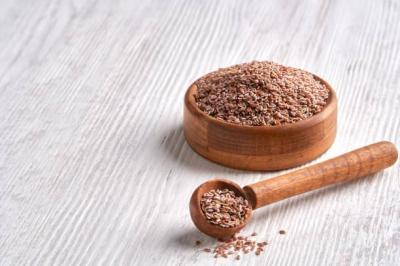 The healing properties of plantain are thought to help restore male strength. They will also help get rid of the symptoms and cyst of the testicles.
The healing properties of plantain are thought to help restore male strength. They will also help get rid of the symptoms and cyst of the testicles.
- Flax
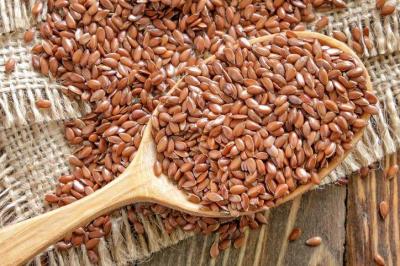 You can also cure the pathology using flax grass. It is necessary to take flax, to press the juice, to add butter (the ratio of the proportions must be of 2: 5) and to light a small fire. The mixture should languish until all the excess liquid has completely evaporated. Use the ointment after it has completely cooled and infused. It is applied as a cream on the testic
You can also cure the pathology using flax grass. It is necessary to take flax, to press the juice, to add butter (the ratio of the proportions must be of 2: 5) and to light a small fire. The mixture should languish until all the excess liquid has completely evaporated. Use the ointment after it has completely cooled and infused. It is applied as a cream on the testic
- Corn silk
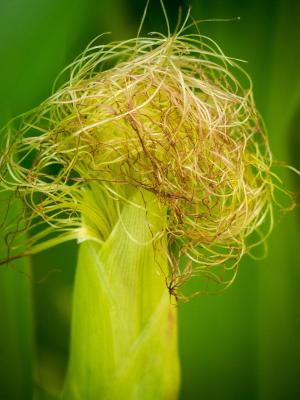 Corn silk is also an excellent herbal remedy for the treatment of epididymis cyst, as it is a powerful antibacterial that also helps to relieve pain.
Corn silk is also an excellent herbal remedy for the treatment of epididymis cyst, as it is a powerful antibacterial that also helps to relieve pain.
We have a very effective natural treatment to cure epididymal cysts permanently.
Order it and start the natural Epididymal Cyst treatment early. Support is offered during the whole period of its intake. To reach us, click on the WhatsApp button in the right corner of your screen or contact us at +229 66 23 89 56
We have representation in all African countries and actively in the following countries: Cameroon, Ivory Coast, Mali, Senegal, Burkina Faso, Togo, Kenya, Nigeria, Gabon, Central African Republic, Benin, Chad, Congo-Brazzaville and Kinshasa. So rest assured that you will receive your products immediately after your order.
Delivery is free of charge anywhere in the world.
- The Goldenseal of Canada
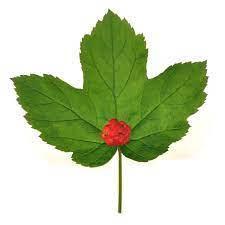 The Canadian goldenseal is an antibacterial and anti-inflammatory drug used by many in conjunction with other herbs to combat prostatitis. It also fights urinary tract infections.
The Canadian goldenseal is an antibacterial and anti-inflammatory drug used by many in conjunction with other herbs to combat prostatitis. It also fights urinary tract infections.
- Ginger
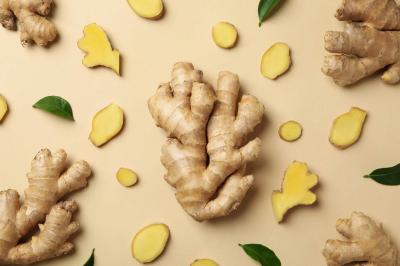 Ginger fights prostate cancer cells and can therefore be added to any diet.
Ginger fights prostate cancer cells and can therefore be added to any diet.
- The root of hydrangea
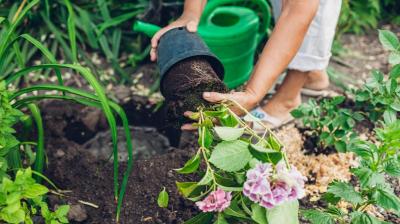 Hydrangea root is also used as an herbal remedy to promote treatment and relieve symptoms of bladder, prostate and other urinary tract infections, including benign prostate hypertrophy and urethritis.
Hydrangea root is also used as an herbal remedy to promote treatment and relieve symptoms of bladder, prostate and other urinary tract infections, including benign prostate hypertrophy and urethritis.
- The rutin
 Rutin is a flavonoid that reduces inflammation
Rutin is a flavonoid that reduces inflammation
- Extract of juniper berries
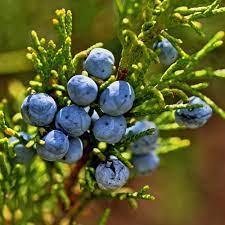 Juniper berry extract excels in urinary tract evacuation, which is very important in case of prostatic hypertrophy. It also helps treat urinary tract infections and prostate infections by activating and cleaning the entire system.
Juniper berry extract excels in urinary tract evacuation, which is very important in case of prostatic hypertrophy. It also helps treat urinary tract infections and prostate infections by activating and cleaning the entire system.
We have a very effective natural treatment to cure epididymal cysts permanently.
Order it and start the natural Epididymal Cyst treatment early. Support is offered during the whole period of its intake. To reach us, click on the WhatsApp button in the right corner of your screen or contact us at +229 66 23 89 56
We have representation in all African countries and actively in the following countries: Cameroon, Ivory Coast, Mali, Senegal, Burkina Faso, Togo, Kenya, Nigeria, Gabon, Central African Republic, Benin, Chad, Congo-Brazzaville and Kinshasa. So rest assured that you will receive your products immediately after your order.
Delivery is free of charge anywhere in the world.
- Dandelion root
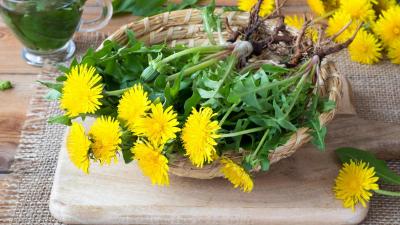 Dandelion root has anti-inflammatory properties that reduce inflammation.
Dandelion root has anti-inflammatory properties that reduce inflammation.
- Parsley
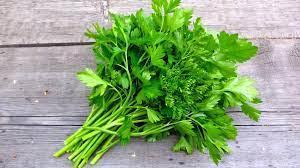 Parsley is a powerful antioxidant and anti-inflammatory.
Parsley is a powerful antioxidant and anti-inflammatory.
Some tips to relieve and avoid Epididymis cyst
What to do to relieve the epididymis cyst
- Get some rest in bed.
- Lie down so that your scrotum is raised.
- Apply cold compresses to your scrotum if tolerated.
- Wear an athletic support.
- Avoid lifting heavy objects.
- Avoid intercourse until the infection is gone.
Foods to avoid in case of epididymitis
When it comes to eating well to promote healing and relieve the pain of epididymitis and strengthen the health of the testicles, there are certain foods you should avoid.
In general, these are mainly high-fat foods, processed foods, sweet foods and spicy foods. The reason is that these foods feed inflammation.
Foods of the epididymitis to be avoided or restricted include: sugary foods, sweets and artificial sweeteners; caffeine; alcohol; processed foods; white flour products; fast foods; hydrogenated foods, trans fats, Fried foods, fatty foods; margarine; sodas; spicy foods; onions, pepper, mustard, fennel
Foods to eat in case of epididymitis
When it comes to following a diet adapted to the health of the testicles, you should consume foods that fight and reduce inflammation and avoid eating pro-inflammatory foods.
These foods are:
Anti-inflammatory foods for the testicles: Epinards; Blueberries; Strawberries and other flavonoid-rich foods
Foods rich in vitamin C for testicular health: Kiwi; Orange; Watermelon; Lemon; Grapefruit; Bitter melon; Tomatoes
Fiber-rich foods for the testicles: Banana; Sweet potatoes; Celery
Whole grains, nuts, beans and seeds: Walnuts; Flax seeds; Pumpkin seeds
Foods rich in omega-3 fats: Salmon; Mackerel; Herring; Sardine; Rapeseed oil; Fish oil
We have a very effective natural treatment to cure epididymal cysts permanently.
Order it and start the natural Epididymal Cyst treatment early. Support is offered during the whole period of its intake. To reach us, click on the WhatsApp button in the right corner of your screen or contact us at +229 66 23 89 56
We have representation in all African countries and actively in the following countries: Cameroon, Ivory Coast, Mali, Senegal, Burkina Faso, Togo, Kenya, Nigeria, Gabon, Central African Republic, Benin, Chad, Congo-Brazzaville and Kinshasa. So rest assured that you will receive your products immediately after your order.
Delivery is free of charge anywhere in the world.
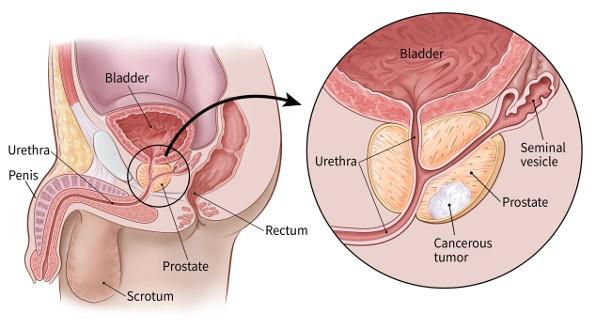
MEDICAL TREATMENT OF THE EPIDIDYMAL CYST
On 26/12/2019
MEDICAL TREATMENT OF THE EPIDIDYMAL CYST
A cyst is a lesion that develops within a tissue or organ. Testicular cysts are benign pathologies that can develop sometimes on the right testicle, sometimes on the left. They particularly affect children and young adults. There are two types of testicular cysts:
Cysts of the epididymis,
Dermoid cysts of the testis.
Cysts of the epididymis are benign tumors of unknown origin. They appear in the form of regular and painless swellings (single or multiple), located at the head of the epididymis.
To permanently cure this disease, Dawasanté experts provide you with a natural treatment based on medicinal plants. Click on the image below to discover this natural treatment.
We deliver all over the world.
For more information, you can contact our experts on +229 51374202 direct line or by WhatsApp at the same number.
The cyst of the epididymis grows at the expense of the swollen part of the upper part or head of the epididymis. There may be one or more cysts within the same epididymis.
The intervention is proposed because of the discomfort or local pain that this cyst can cause. It aims to remove the lesion by the surgical opening of the bursa.
The absence of treatment has no consequence in itself, apart from the fact of a possible increase in the size of the cyst, discomfort, or local pain, which it can cause.
Symptoms and Pains
Concerning the cysts of the epididymis, the manifestations are mainly an increase in the volume of the bursa giving the sensation of having "a ball of fat" at this level, most often accompanied by local discomfort. As for dermoid cysts, the most evocative symptom is the increase in the volume of the bursa. Cysts "rarely cause pain, except in cases of large volume," said Dr. Antoine Faix, surgeon urologist and head of Andrology and Sexual Medicine of the French Urology Association Committee.
The spermatocele kystesdu often contain pools of dead sperm. Doctors don't know what is the cause. Often, epididymal cysts or spermatocele cysts develop for no particular reason.
There are no specific causes for the appearance of a cyst.
Most of the time, cysts in the epididymis don't hurt, so you may not have symptoms. You may only feel a lump when you examine your testicles. Your doctor might find it during an exam. As the cyst gets bigger, you may feel a heaviness in your testicle. You might also notice a lump or swelling behind or above your testicle.
Diagnosis: Who to conduct and what tests to do
If you experience the slightest discomfort and in any doubt, consult your doctor or herbalist quickly, as the symptoms suggesting the presence of testicular cysts are very similar to those suggesting the presence of malignant testicular tumors.
To make a diagnosis on the cysts of the epididymis, it is necessary to do an ultrasound, and possibly a histological examination (sample and tissue analysis) which will reveal the cystic nature of the tumor, and rule out the hypothesis of a cancerous tumor.
The diagnosis of cysts of the epididymis also involves a scrotal ultrasound. This may reveal rounded nodular and cystic formations of varying sizes in the testicular parenchyma (tissue). However, the definitive diagnosis is only established after the histological examination (tissue analysis) which makes it possible to rule out the cancerous hypothesis.
Treatments: What to do if a testicular cyst gets bigger?
Most of the time, this is not the case. Your doctor may prescribe pain relievers to make you more comfortable.
Aspiration is a procedure that can help relieve some of the pain and pressure from the spermatoceles. Your doctor will insert a needle into the cyst to remove some of the fluid.
If the cyst fills up and comes back, your doctor may perform a procedure called sclerotherapy. It will drain some of the fluid from the spermatocele. Then he will use a substance that causes the sac to fill with scar tissue. This tissue could reduce the risk of the spermatocele returning. But it can damage the epididymis. Your doctor can suggest this option only if you are not interested in having children.
In rare cases (if the spermatocele is interfering with your daily life) your doctor may remove it with surgery. It will numb the area, make a small incision (cut) in your scrotum or groin, and remove the growth.
Treatment of epididymal cysts relies on clinical and ultrasound monitoring when the benign cystic nature is evident.
Treatment of an epididymal cyst
The intervention takes place under general or locoregional anesthesia. A short incision is made at the level of the bursa. After checking the underlying testis, the cyst is completely removed by opening the envelope of the epididymis and dissecting as close as possible to the wall of the cyst. Sometimes the surgeon may need to remove part or all of the epididymis.
The intervention is carried out within the framework of an outpatient surgery hospitalization. It may, in some cases, require 1 or 2 days of hospitalization.
Pain at the incision is usually minimal and temporary.
For a few weeks, the bursa remains enlarged and small swelling around the testicle can sometimes persist.
Removal of the epididymal cyst is suggested in the event of an increase in the volume of the bursa and/or any local discomfort or pain associated with its presence. "A short incision is made at the level of the bursa. After checking the underlying testis, the cyst is completely removed by opening the envelope of the epididymis and dissecting as close as possible to the wall of the cyst. The surgeon can sometimes be having to remove part or all of the epididymis ", develops the site of the French Association of Urology. Surgery is also considered in the case of certain dermoid cysts, in the presence of small lesions.
Complicated cases of epididymal cyst
In the majority of cases, the operation takes place without complications. However, any surgical procedure carries a number of risks and complications, which are described below:
Hematoma: bleeding after the operation can lead to the constitution of a hematoma of the bursa, possibly extended to the external genitalia, a reoperation to drain the hematoma may be necessary.
Delayed healing: it may require prolonged local care.
Infection: the existence of discharge through the incision, general signs of infection such as fever, or local signs such as inflammation of the bursa can lead to the initiation of appropriate antibiotic treatment and the treatment of a possible abscess by your surgeon.
Testicular atrophy: it occurs exceptionally after surgery of the epididymis
Recurrence: his risk is extremely low.
Impact on fertility: partial or total removal of the epididymis will permanently prevent the passage of spermatozoa on this side. This risk is rarer in the event of simple removal of the cyst.
Persistence of local discomfort or pain: Removal of the cyst does not guarantee the total disappearance of discomfort or pain.
We deliver all over the world.
For more information, you can contact our experts on +229 51374202 direct line or by WhatsApp at the same number.

MEDICINAL PLANTS TO TREAT HEPATITIS B AND C
On 26/12/2019
WHAT MEDICINAL PLANT CAN BE USED AGAINST HEPATITIS B AND C?
Hepatitis is an inflammation of the liver. This disease may progress on its own to healing or progress to fibrosis (scarring), cirrhosis, or liver cancer. Hepatitis viruses are the most common cause worldwide, but other infections, toxic substances (such as alcohol or certain drugs), and autoimmune diseases can also be the cause of cases of hepatitis. 'hepatitis. However, there is a medicinal plant(s) that can work against the negative effects of the hepatitis virus. Among them is one that has proven more effective and has led to several testimonies.
Dawasanté experts have a natural treatment based on medicinal plants to cure hepatitis B and C permanently.
Click on the image below to discover this natural treatment.
BEST MEDICINAL PLANT FOR HEPATITIS CURE
Our natural remedy also has anti-inflammatory and antioxidant properties, which help in the treatment and prevention of liver problems, so it is the best natural remedy for curing hepatitis B and C. It also fights against viruses that cause liver disease. 'hepatitis. It also provides antioxidants that help maintain the overall health of the liver. Simply put, it helps the body fight viral infections and cleanse the liver. It is the miracle solution to cure hepatitis B or C.
Our herbal teas have no side effects, either on the body or on health. Our treatment is therefore not dangerous. This natural remedy is a secret to cure your hepatitis without side effects.
Worldwide delivery!!
You can contact us by Whatsapp at +33644661758 or at +22990312738 direct calls and WhatsApp
MEDICINAL PLANT FOR HEPATITIS
Ginseng protects the liver from alcohol:
Among the main active ingredients of Panax ginseng are ginsenosides. From this family of natural molecules, we have been able to identify to date more than thirty representatives, each having different or complementary virtues. One of them, ginsenoside Rg1, could, according to recent animal studies, help protect the liver from liver damage following alcohol poisoning. The analysis of the inflammatory parameters and the state of the hepatic tissues after ingestion of a high dose of alcohol, much better in mice treated preventively with ginseng, shows the interest that this plant could have in addictology, in particular in support for weaning and prevention of cirrhosis often associated with alcoholic hepatitis.
Basil
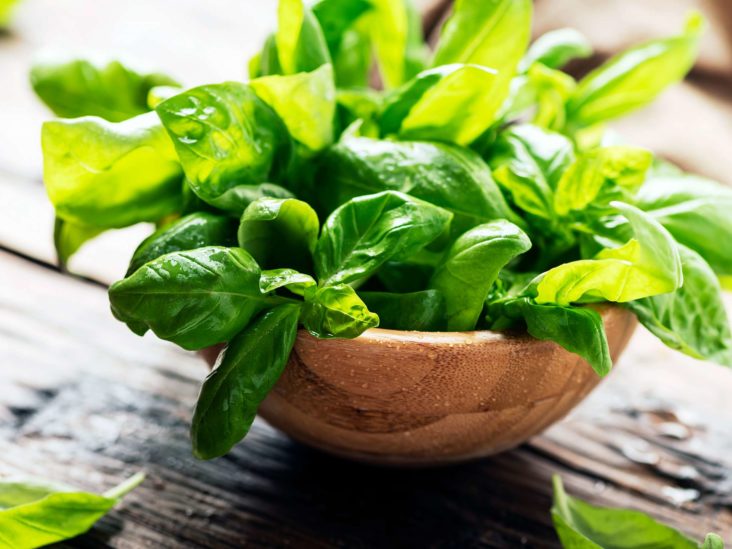
Another virus-killing herb that is rarely known is bacilli. Basil is often used as a spice for Asian food, such as in Thailand. The antiviral compounds ursolic acid and apigenin in it have the potential to overcome enterovirus, hepatitis B, and herpes.
Oregano

For lovers of Italian cuisine, you must be familiar with the oregano sprinkled on pizza. Oregano is a virus-killing herbal plant because it contains the antiviral compound carvacrol.
Rosemary
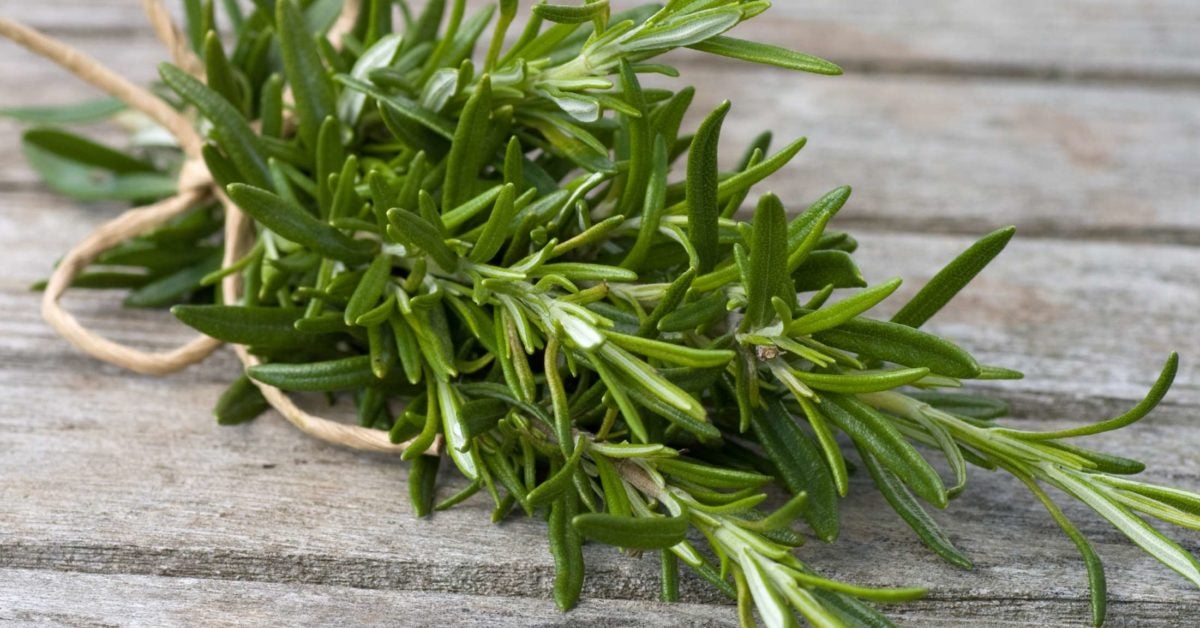
You may often see rosemary in grilled chicken dishes. In fact, rosemary contains oleanolic acid which has the potential to treat hepatitis, influenza, herpes, and HIV in animals.
Licorice

Licorice is often found in traditional Chinese cough medicines and contains antiviral compounds liquiritigenin, glabridin, and glycyrrhizin. The root of the medicinal plant licorice has the potential to fight viral infections in the respiratory tract, HIV, and herpes.
Astragalus

Astragalus is a virus-killing herbal plant from China that has antiviral compounds and plays a role in boosting the immune system and protecting astrocyte cells in the body.
Elderberry
Elderberry or Sambucus is a medicinal plant that is often made in supplement form. This virus-killing herbal plant is often used to treat colds and flu.
Echinacea

Apart from elderberry, another virus-killing herbal plant that is often used as raw material for health supplements is echinacea. This medicinal plant has antiviral compounds that are effective against influenza and herpes.
Sage
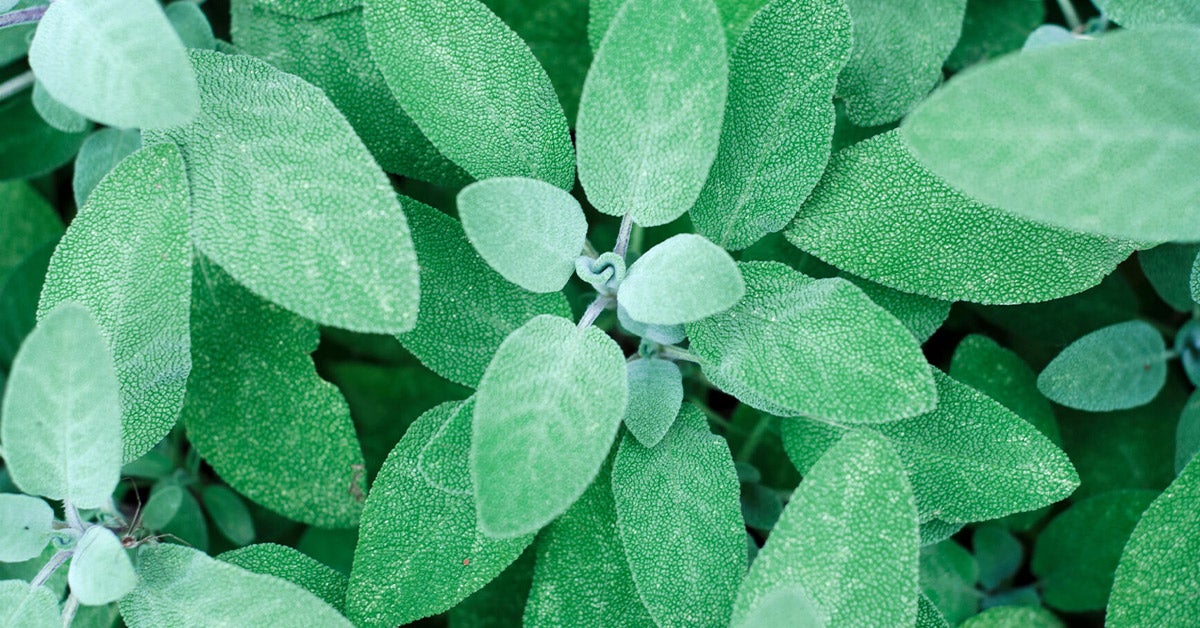
You may rarely hear of the sage plant, which is a typical Western spice. However, this herbal plant has long been used in traditional medicine for viral infections. The antiviral content in this virus-killing herbal plant is located on the leaves and stems.
CLICK HERE TO DISCOVER THE BEST MEDICINAL PLANT FOR HEPATITIS
Worldwide delivery!!
You can contact us by Whatsapp at +33644661758 or at +22990312738 direct calls and WhatsApp

